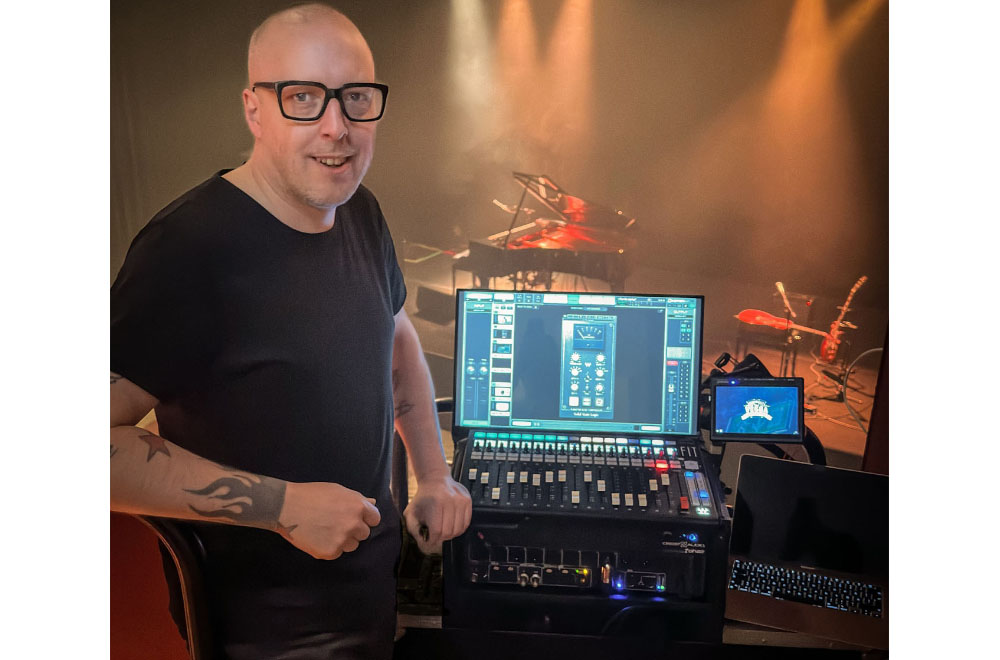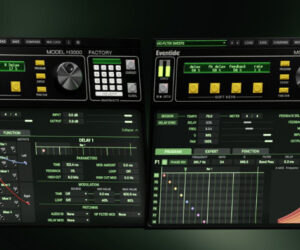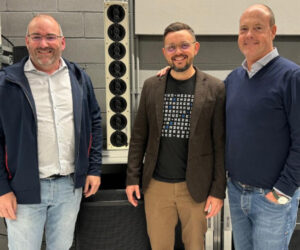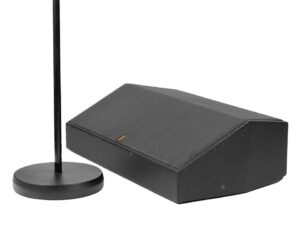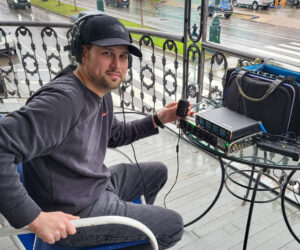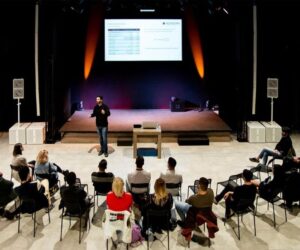Front-of-house engineer Joe Vegna (Loreen, Peter Jöback, Stefan Sundström, Lolita Pop, Pernilla Andersson) is working with a Waves eMotion LV1 live mixer and Waves plugins for the 2023 tour of Swedish ensemble Stonemountain Orchestra.
“In two words: Sound quality! The LV1’s sound is exceptional,” Vegna says. “I was looking for a console that sounds amazing and is also small enough to actually tour with when going into smaller venues. My good friend Rompa (FOH, Ronny Bernstein), who tours with the rock band Europe, has been using the eMotion LV1 for years and always raves about how good it sounds. So I thought I’d give it a go for an earlier tour I did this spring with Peter Jöback. And wow, it did not disappoint. That tour was very challenging, but with the LV1 I could do things that no other console can.”
He continues, “So, when it was time to plan the Stonemountain Orchestra tour, I sat down with Sebastian Wennergren, our monitor engineer, to figure out if it could be done on the LV1 system. This band is very demanding, and everything has to sound absolutely perfect, both in the PA and all IEMs. However, the console still has to be small enough to be in and out quickly in a variety of venues. The LV1 fit the bill and, again, did not disappoint.”
“Another benefit,” he adds, “is that any of the eight plugin slots can be sidechained individually. For example, on the bass I can have one compressor that reacts to the actual bass, another that reacts to the kick, and, if needed, a third one that reacts to the cowbell. Very flexible. And since I quite often run both FOH and monitors for different bands, it’s really cool that I can have different delay groups for different outputs. This means that I can have the latency very low in IEMs while having it a bit higher for the PA where it doesn’t matter as much.”
“One thing that Waves has done really well,” he remarks, “is the ease of use when it comes to networking. I have a lot to learn about networking, but I never encountered any issues with it on the LV1. During the Stonemountain Orchestra tour, we successfully connected nine devices via the SoundGrid network, and it functioned seamlessly. The only time there has been an issue was when I was overthinking things and tried to come up with a complex routing solution. After an hour of scratching my head, the solution was one button away and could not have been simpler. I’m not used to things being easy in networking.”
The Stonemountain Orchestra includes 14 musicians on stage, often joined by guest artists. The audio team runs 15 stereo IEMs. Starting from the stage, there are about 50 inputs, all connected to the 64-channel eMotion LV1. From there, Vegna share all the boxes with the monitor engineer, who also has a 64-channel LV1 mixer up on stage, mixing four wireless IEMs and 11 wired IEMs.
“From my end, I send anywhere from two to ten stereo outputs to feed the PA, subs, front fill, center, side fills and so on,” he explains. “The whole system has a capacity of 70 inputs and 58 outputs. To top it off, we record every input and output. The recorded inputs are used for virtual soundcheck while the recorded outputs are mainly for troubleshooting purposes. Additionally, they can also be sent to any standing musician who may want something to practice to.”
Vegna’s “must-have” plugin is the Waves F6 Floating-Band Dynamic EQ: “If I had to, I could do a show with just this one plugin. The biggest challenge mixing Stonemountain Orchestra is to make room for everything in the mix. There is so much going on at the same time. I couldn’t have done this without the F6. The dynamic section makes me dial things in so that it only reacts when needed. And being able to sidechain anything to anything is just dynamite. The F6 sits on most channels, and I rely heavily on the sidechain in the dynamic section. This cleans up the reverbs, ducks the bass when the kick hits and keeps the horn section out of the way from the vocals. Just a superb tool.
“If the F6 is my first plugin, the Scheps Omni Channel 2 is a close second. Not only does it sound great, but the workflow is very flexible, and the overview is second to none. And it actually works with the Waves MyFOH (Remote control tablet app for the Waves eMotion LV1), which was a nice surprise. I use this as my main channel strip for everything that’s going to monitors, since I quite often have to run up to the stage with an iPad. I highly recommend messing around with the resonance dial on the high pass filter. This can turn your kick drum into any sound you want, just amazing. And if you want to dig deeper, all of the modules can run in stereo, dual mono or MS. I am also a big fan of the Waves InPhase plugin. I use it mainly for drums, mostly for aligning close mics to the overheads. But I also use it for any source where I have more than one mic or DI on. That can be bass if I have both a DI and a mic on the amp, or on a guitar amp where I use two mics on. In that case I don’t really care about the ‘Capture’ feature. I use it to find the best tone between the mics rather than making sure it’s actually in phase.”


